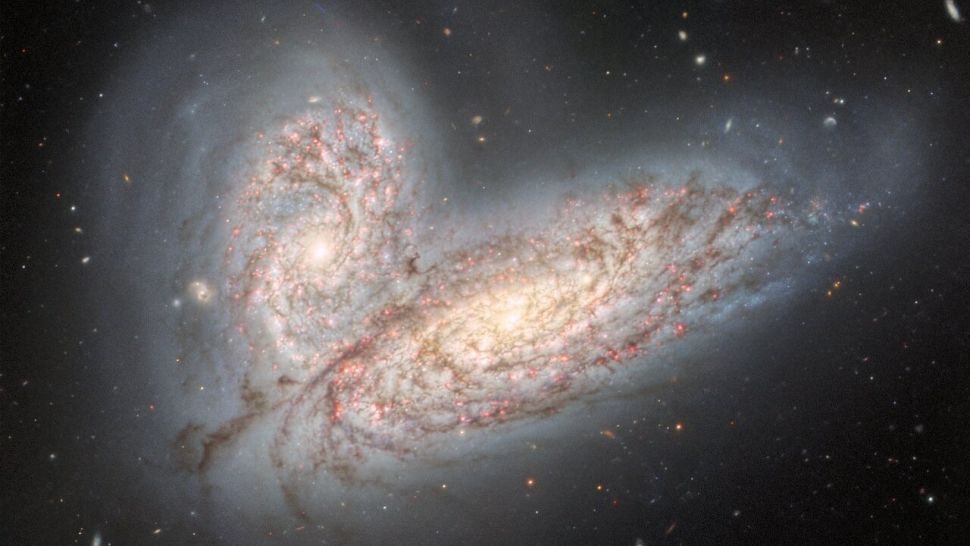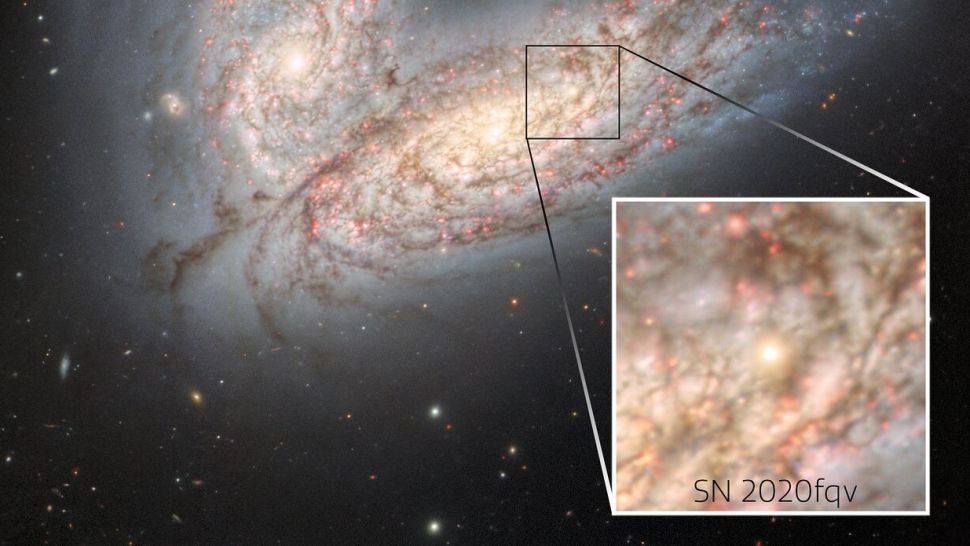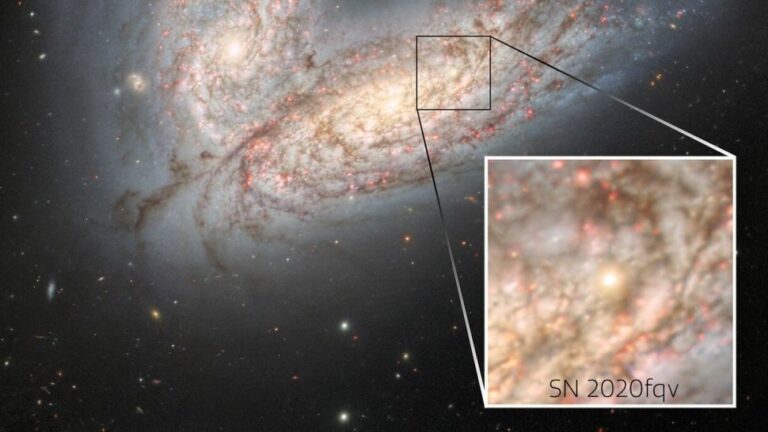Wings of a ‘Cosmic Butterfly’ glitter amid a scene of galaxies clashing ferociously.
The two spiral galaxies are about 60 million light-years from Earth.
A magnificent picture of two spiral galaxies colliding and merging has been revealed by astronomers using the Gemini North telescope in Hawaii.
According to a statement from NOIRLab, which runs the Gemini North telescope, the colliding galaxies NGC 4568 and NGC 4567, also known as the Butterfly galaxies because of the dual-lobed shape their interaction causes, are situated 60 million light-years from Earth in the Virgo Cluster and will merge to form a new elliptical galaxy in about 500 million years.
The new image provides scientists with a “sneak peek” of what will occur when our galaxy, the Milky Way, collides with its nearest massive neighbor, the Andromeda galaxy, in around 5 billion years. The resultant galaxy will undergo substantial transformations due to the collision, and it’s possible that the sun and solar system could be sent into a new location.

The picture shows two galaxies trapped together by their shared gravitational fields while a galactic merger, one of the most stunning phenomena in the cosmos, is in the early stages.
Around 20,000 light-years separate the respective centers of NGC 4568 and NGC 4567, or roughly three-quarters the distance between Earth and the Milky Way, the core of our galaxy.
Life and death for stars
The picture still shows the original spiral structures of both galaxies, but as the merger proceeds, these arm-like patterns will vanish. As powerful bursts of star formation are sparked by the galaxies’ conflicting gravitational pulls, they will lose their spiral patterns.
Streamers of gas and stars will be dragged out of each galaxy over the course of millions of years as the galaxies spiral around one another in ever-tighter loops. The multiple NGC 4568 and NGC 4567 structures are combined in this method to form a single elliptical galaxy.
The period of rapid star creation will have come to an end at this point since the fuel for star formation, cold, dense clouds of gas and dust, will have been exhausted or pushed out of what is left of the progenitor galaxies.
Computer models and observations of galactic mergers like the one between NGC 4568 and NGC 4567 have been used to show that galaxies combine to generate elliptical galaxies that are smooth and devoid of features.
As a result, it is conceivable that NGC 4568 and NGC 4567 will combine to form a galaxy that resembles Messier 89, an older neighbor of NGC 4568 that is also part of the Virgo Cluster. Older, low-mass stars and ancient, tightly bonded clumps of tens of thousands to millions of stars, known as globular clusters, make up this ancient galaxy, which has seen relatively modest star creation in recent times.

The dazzling cosmic explosion caused by the demise of a huge star, known as a supernova, is also seen in the Gemini North picture, which was produced using data gathered in 2020. The supernova, SN 2020fqv, is seen in the photograph as a bright point near the center of one of the spiral arms of NGC 4568, the galaxy at the bottom of the picture. It was initially discovered in 2020.
Astronomers were able to see a star’s dying moments thanks to the Hubble Space Telescope’s early discovery of the explosion’s aftermath. These kinds of data are being used by researchers to develop a supernova early warning system for other stars.
Do not forget to share your opinion with us to provide you with the best posts !





0 Comments